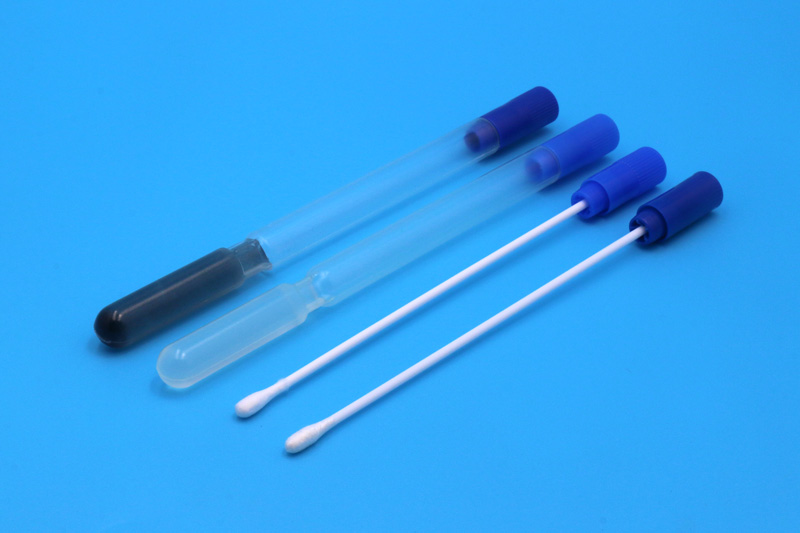臨床検体の保存における輸送媒体の重要性
2023-08-21
医療診断分野では, 正確かつタイムリーな臨床検査は、さまざまな病気や症状の診断に重要な役割を果たします。. 臨床検体の完全性と生存可能性を確保するため, として知られる専門メディア 輸送媒体 使用されています. この記事は、臨床検査用のさまざまな種類の臨床検体の保存と輸送における輸送媒体の重要性を明らかにすることを目的としています。.

1. 輸送媒体について
輸送媒体とは、臨床検体の保存と輸送に適した環境を提供する特別に設計されたソリューションを指します。. 保護バッファーとして機能します, 研究室への輸送中の標本の生存率を維持する. 輸送媒体の組成は輸送される検体の種類によって異なります, 特定の微生物やウイルスにとって最適な条件を確保する.
2. 検体の生存率の維持
輸送媒体の主な目的の 1 つは、臨床検体の生存能力を維持することです。. 例えば, 喉から採取した綿棒, 鼻, または他の体の部位には、正確な臨床検査のために生きたままにしておく必要がある微生物やウイルスが含まれている可能性があります。. 輸送媒体はバランスの取れた環境を提供します, これらの微生物が実験室に到達するまで増殖または死滅するのを防ぐ.
3. 標本の完全性の維持
輸送媒体は、輸送中の臨床検体の完全性の維持にも役立ちます. 標本を損傷または汚染する可能性がある環境要因に対する保護バリアとして機能します。. 安定した環境を提供することで、, 輸送媒体によりサンプル劣化のリスクが最小限に抑えられます, 正確で信頼性の高いテスト結果を保証する.
4. 輸送媒体の種類
さまざまな種類の伝送媒体が利用可能です, それぞれが特定の種類の臨床検体を保存するように調整されています. 例えば, ウイルス輸送培地 (VTM) ウイルスを含む検体の輸送に使用されます, 一方、Amies 輸送培地は細菌検体によく使用されます。. 各輸送媒体には、輸送される特定の微生物やウイルスの生存率を保証する独自の添加剤と緩衝液が含まれています。.
5. 試験に適した条件
輸送媒体は臨床検体の生存能力を維持するだけでなく、臨床検査に適した条件を提供します。. 標本を最適な状態に維持することで、, 輸送媒体により診断テストの精度と信頼性が向上します. これは正確な結果を得るために重要です, 適切な治療決定と患者転帰の改善につながります.
6. アウトブレイク状況における重要性
感染拡大の状況では輸送媒体が重要な役割を果たす, パンデミックや伝染病など. そんな時は, 感染症の蔓延を制御するには、迅速かつ正確な検査が不可欠です. 輸送媒体により、臨床検体を遠隔地または感染地域から集中研究所に安全に輸送できるようになります, 迅速な診断とアウトブレイクの効果的な管理を可能にする.
輸送媒体は診断プロセスに不可欠な要素です, 輸送中の臨床検体の生存率と完全性を確保する. 標本を最適な状態で保存することで, 輸送媒体により正確な臨床検査が可能になります, タイムリーな診断と適切な治療につながります. その重要性は、感染拡大の状況下ではさらに顕著になります。, 感染症の蔓延を制御する上で重要な役割を果たしている. 結局のところ, 輸送媒体は医療専門家と検査技師の間の重要なリンクとして機能します, 正確で信頼性の高い診断結果の提供を容易にする.
















